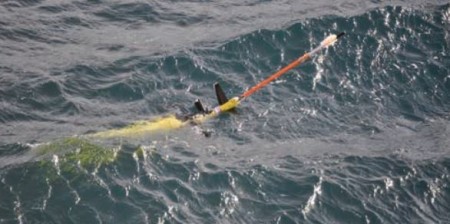← Back
Finding a glider in the Southern Ocean

The glider was still diving but it was unable to transmit data and the GPS positions were increasingly unreliable. After 24 hours, the glider stopped sending data via Iridium altogether. Only the Argos positions were still being received, with a 30 minute delay via ArgosWeb
Finding the glider in a sea of ice
Prepared for a scenario featuring the loss of communication with a glider, the research team had brought recovery equipment including the CLS Argos goniometer (RXG134). To minimize the time spent searching at sea, the bridge officers used directional information from a Skymast directional antenna in conjunction with signals from the CLS Argos goniometer and measurements of wind direction, to estimate a rough position and began a creeping line search. As the vessel got closer to the last reported Argos position, the directional antenna became increasingly unreliable. However the CLS Argos goniometer was useful, receiving two Argos fixes in 15 minutes, giving the captain and crew confidence that they were on the right track.
Perseverance and good equipment
The Seaglider was found after three and a half hours of intense search efforts, in difficult conditions including subzero temperatures and iceberg-dotted waters. Upon recovery, the glider’s antenna was encased in a block of ice, but the glider was otherwise undamaged. Thanks to the Argos SPOT 5 transmitter attached to the antenna, an inventive mix of direction-finding technologies, and the crew’s perseverance, the Seaglider and its precious data were recovered.
User(s) : Dr Bastien Queste
Organism : Centre for Ocean and Atmospheric Sciences, University of East Anglia, UK


